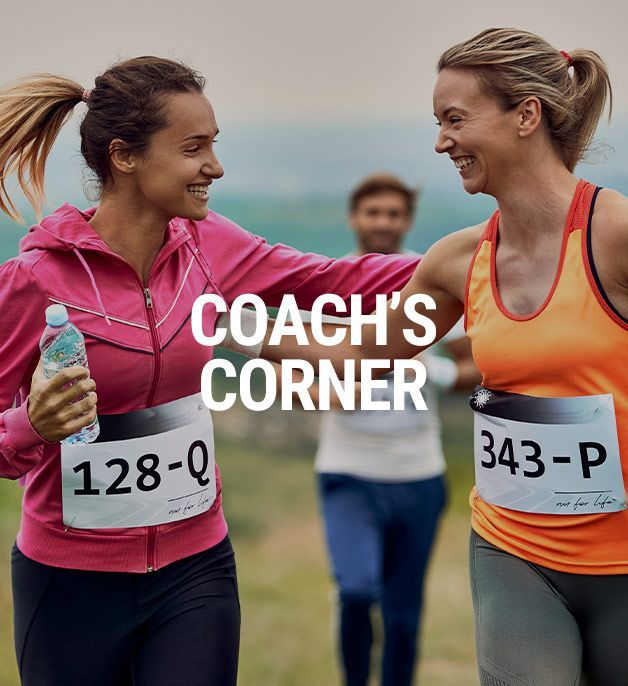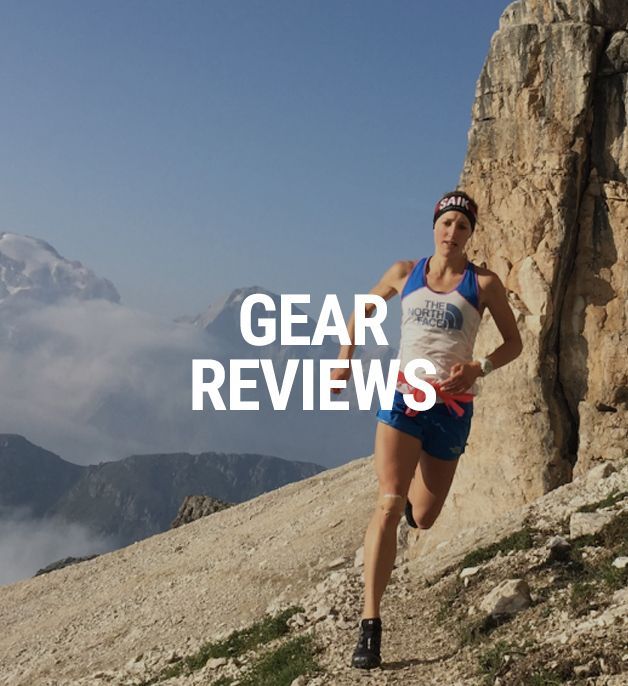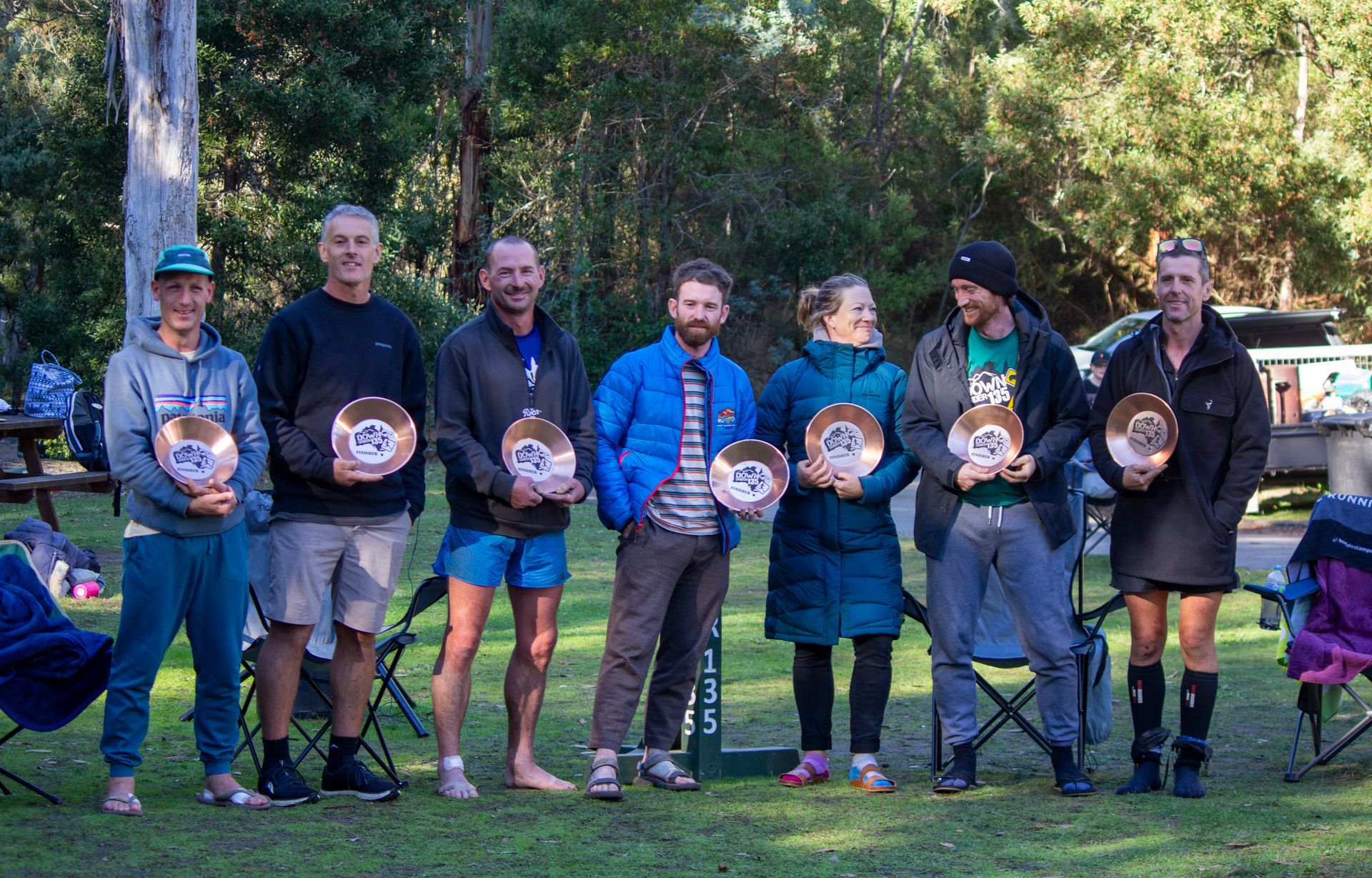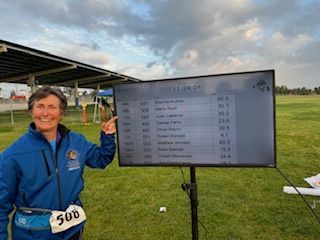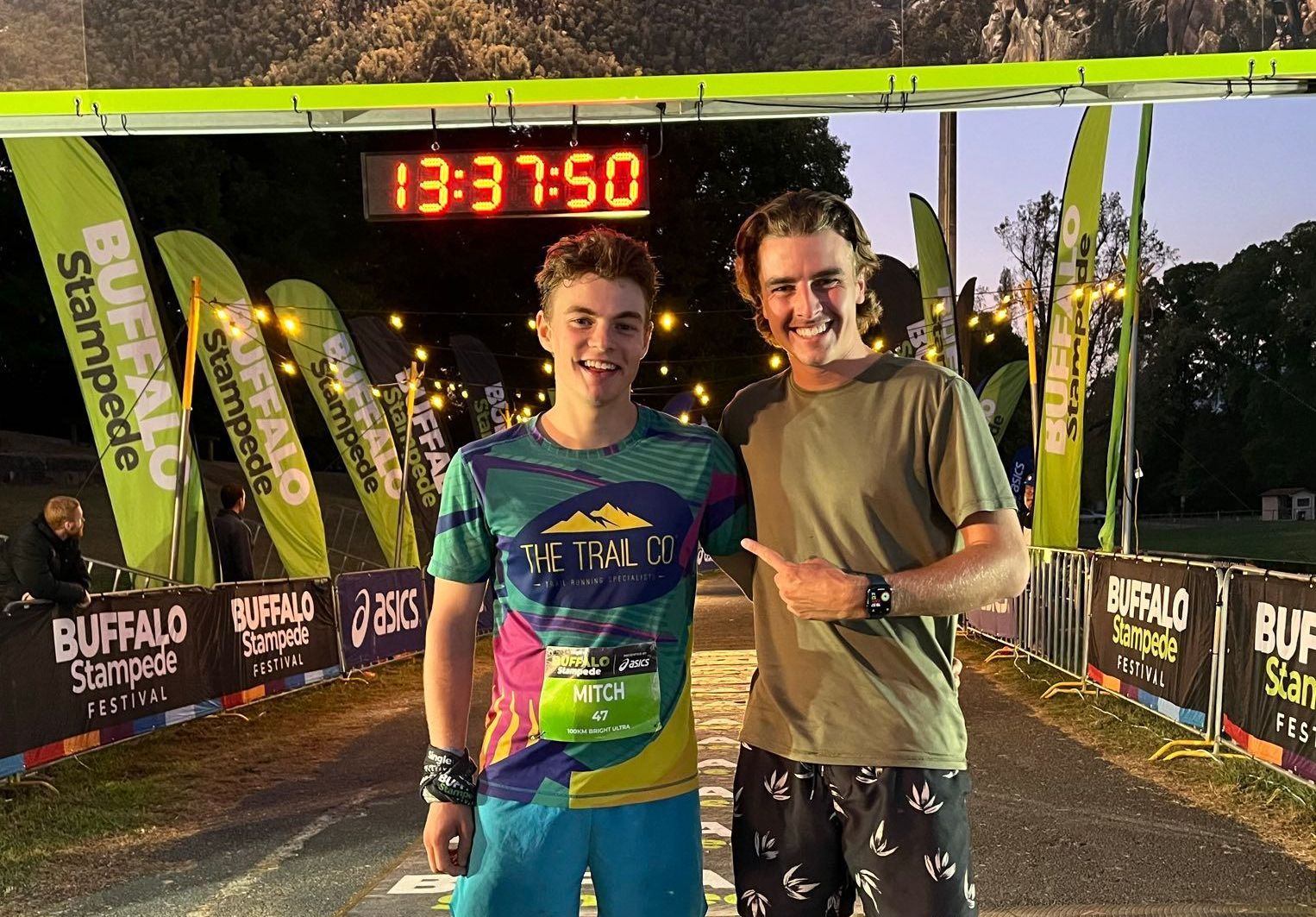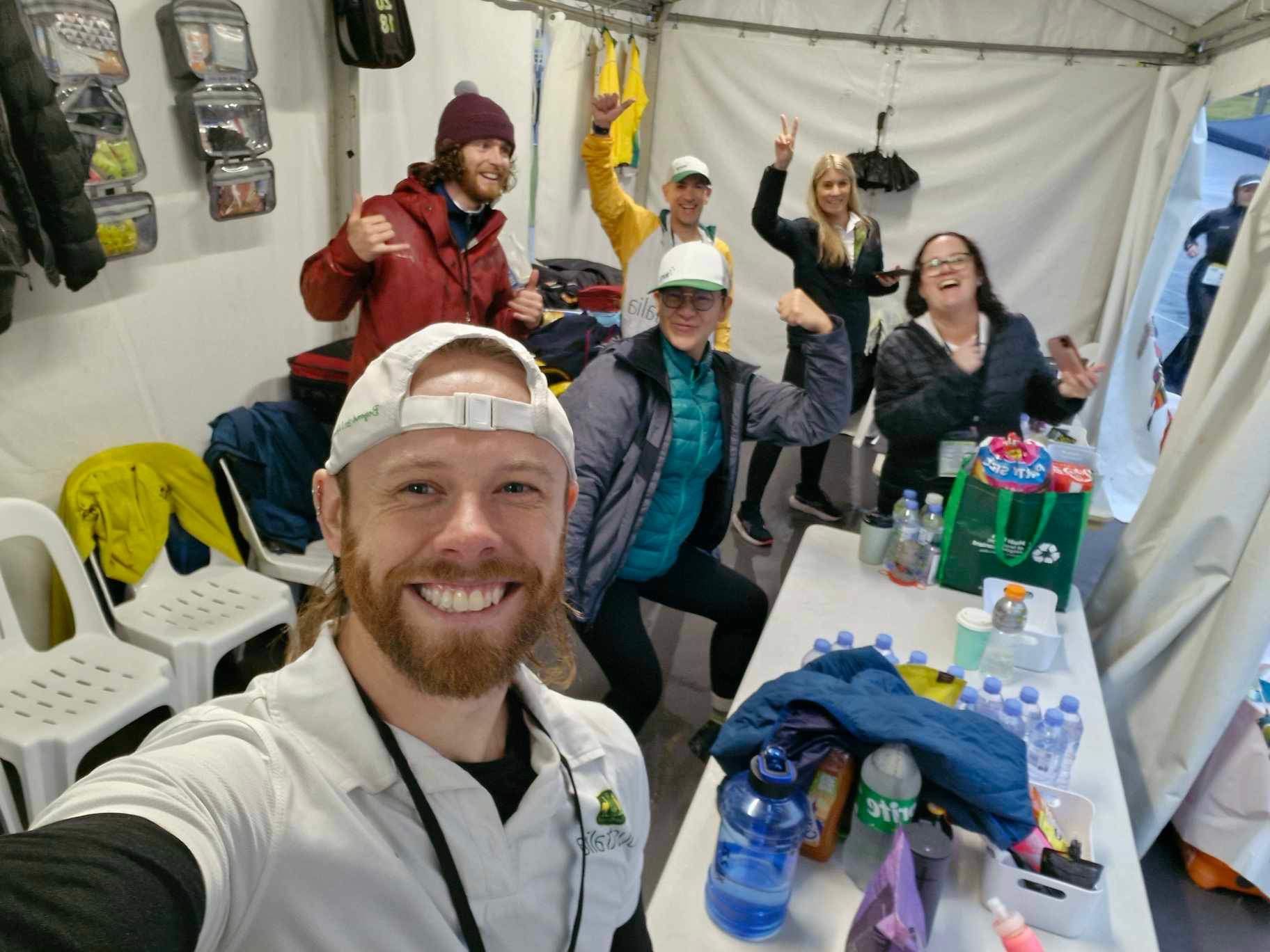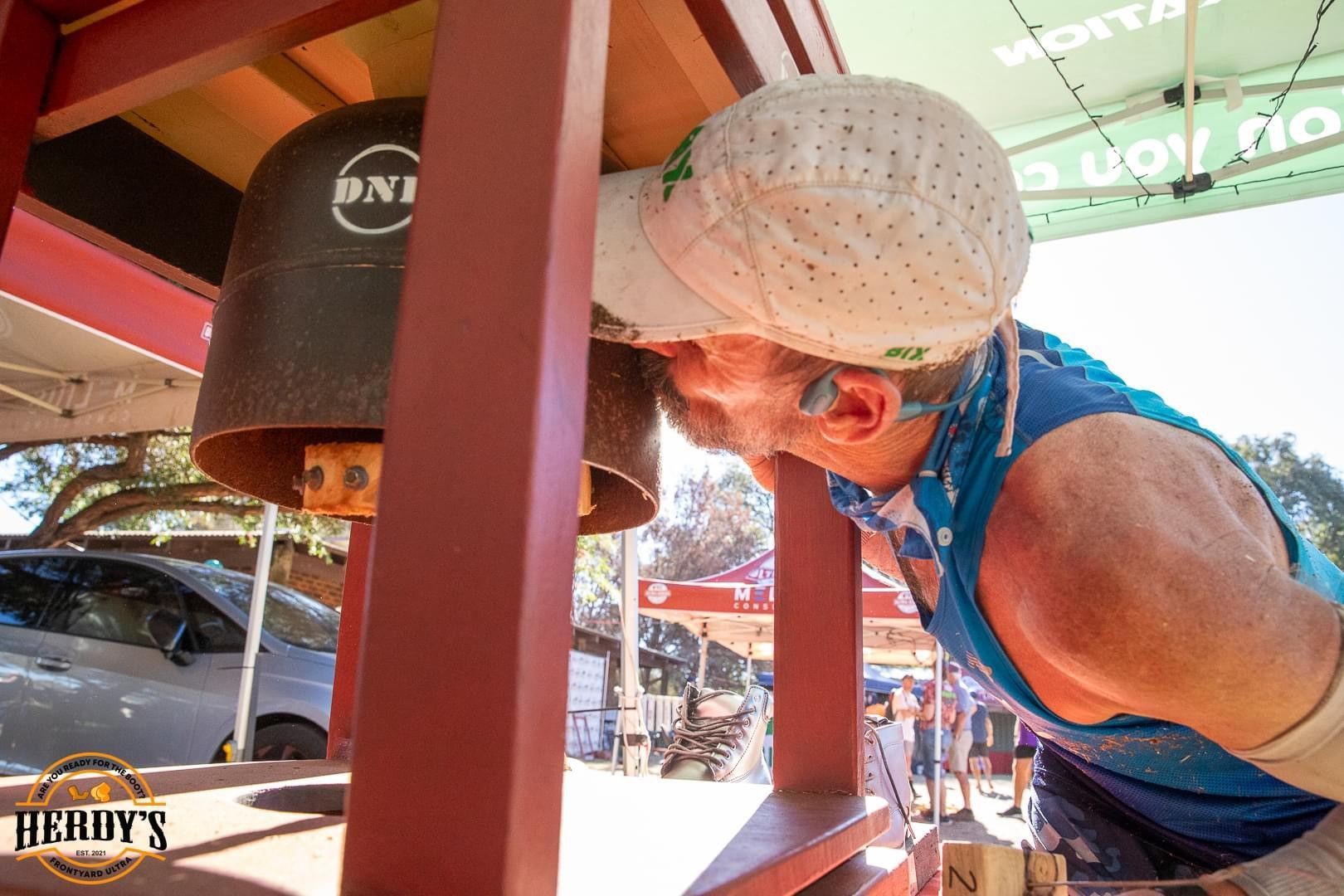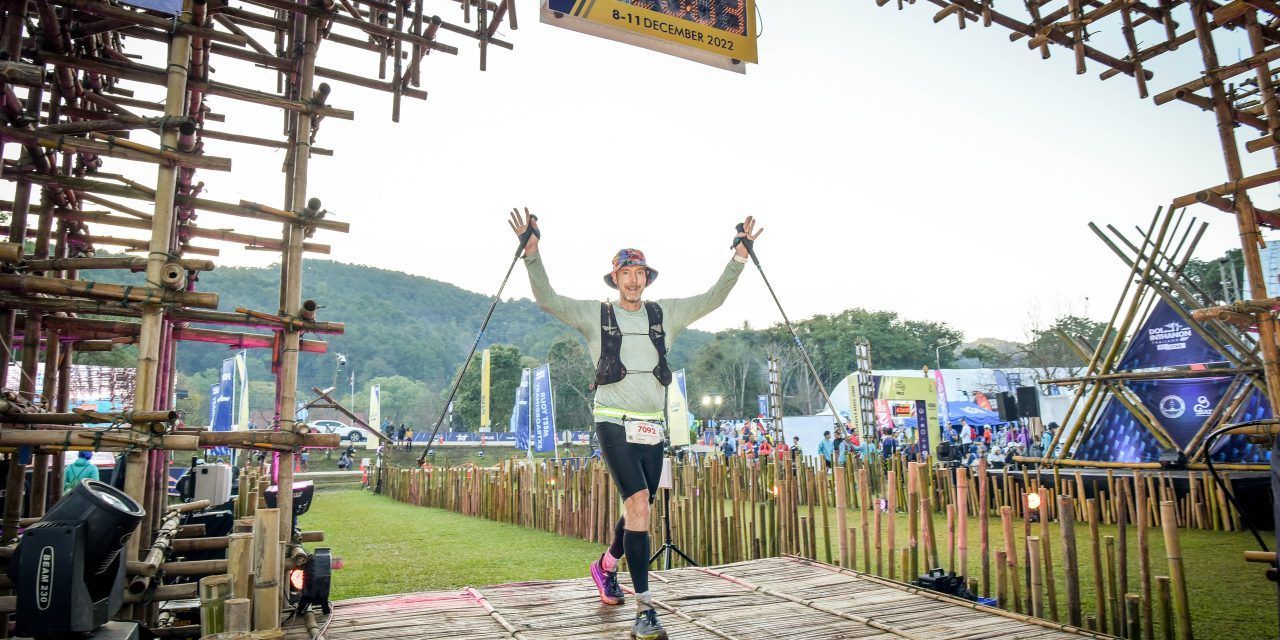
ASCENDING THE MOUNTAIN
Contributed by Doug Bartlett, AURA member (Willetton, WA)
DOI INTHANON THAILAND BY UTMB SUMMIT 160, TAMBON BAN LUANG (THAILAND), 8-11 December 2022
It was late into the second night on a gentle downhill section, partly dozing on my feet, when I slowed to duck under a large branch. Wack! Too late. In the cool night air with no hat on I’d bashed my head into the branch, and now I was standing and looking down, watching blood dripping onto the dark brown earth in the light of my headlamp.
Now I had to think quick: ask for help from one of the many passing runners, or sort myself out? I put on my buff while I ran on, to soak up some blood, working out options. If I could find a stream to wash off the blood, then use my phone camera to photo my head…yes! Then I could clean it, bandage it, put my hat on, and the aid station medic wouldn’t even know. No risk of being pulled from the race. So that’s what I did. Brilliant.
This was the first time I’d had to have a first aid kit in a race, and first time I’d needed one. What a coincidence.
I heard about the Thailand by UTMB Summit 160 from doing a search of 100mile+ ultras around the world. Yes, I am addicted, and this race immediately caught my attention: a miler around a mountain in Thailand. The mandatory gear list was interesting: because the course elevation ranged from 650m in the lowest valley to the peak of Doi Inthanon at 2,556m runners would need both hot weather gear for the valleys and cold rain gear for the peak. In addition to the first aid kit, runners needed their own collapsible cup, a bowl and spork (or eating utensils). Plus all the usual headlamps etc. Fortunately the week of the race gave us mild weather ranging from around 28˚C in the valleys during the day to 10˚C on the peak at night, so no extra cold layers needed.
On Friday morning 9 December 2022 I joined the throng of 514 fit, healthy, mostly happy (some nervous) trail runners sporting all manner of bright colours and flags. Coming from 64 countries, it was a plethora of language, cultures and trail brands, with everyone having the one thing in common: we were about to start a trail race!
After some very loud welcoming in both Thai and English, and a bit of Thai cultural music and drumming, the race started promptly at 10am with a half dozen people blowing bullhorns under a shower of confetti, and masses of spectators lining the course. Wow!
We headed off down the main road for half a kilometre, then veered onto a side road and along a farm track for the first climb. Most of this first few kilometres was nice and wide, so there was plenty of room for runners to find their pace without having to walk. The first climb went on for a while, but levelled out soon enough, and so we sweated away as the morning got hot and humid.
The hills started getting steeper and longer, and by the first aid station I was just under my schedule, aiming for a 36 hour finish. I love planning for these events, and have a comprehensive spreadsheet against which I record my times and targets. I reached the second aid station exactly on target, which is a bad sign: normally I’m ahead of my schedule this early in the race, but what can you do when the ascents are so steep, and the descents likewise? From Aid 2 (Mae Uam Water) to Aid 3 (Mae Chaem Guard Unit) we had a five kilometre descent. Yes, you read that correctly: five kilometres of non-stop, steep, descending that was the first real test of quad strength. Ooh, the burn!
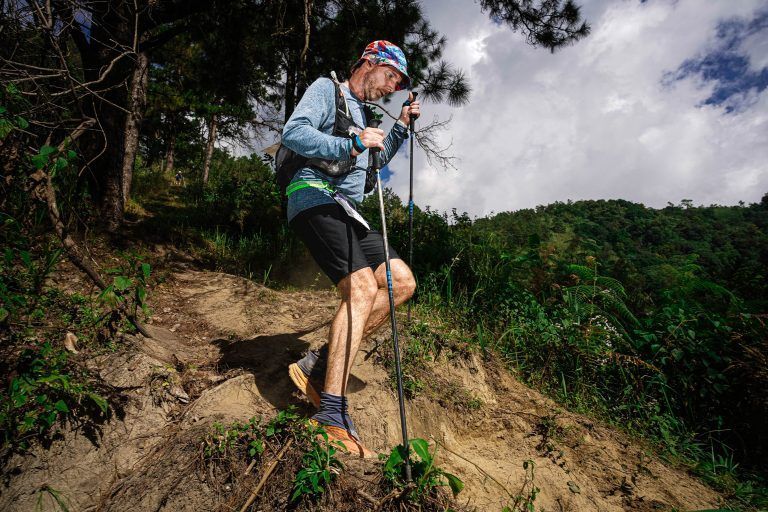
Doug takes one of the descents. Photograph – Running Connect/Supplied.
Then we started the serious climbing. Step, step, breathe, step, step, breathe, pushing with the poles, up and up and up. From Aid 3 to Aid 4 (Relic of the Buddha), in 10 kilometres we’d ascend 1,070m. The weather changed from mid-afternoon valley heat to cool moist evening chill, and you could feel it get colder with each step. As I ascended, the sky was getting dark with clouds and I started seeing flashes on the horizon. “Oh”, I thought: “was this a storm, would they halt the race?” But strangely there was no thunder. And then I realised what I was seeing: perched way up the hill in the grass the photographers were flashing at runners as they climbed past. And so we were treated to a magic light show against the rising cloud.
Finally arriving at Aid 4, I knew my schedule was out. I arrived at 7:28pm, 9hrs 28minutes to do only 45.4km. At this rate I’d struggle to get to the peak before the first cutoff. So I left quickly to get the next 5.2km done, arriving at the first major milestone and highest part of the course, the Doi Inthanon summit, 50.6km in 10hr 38min (my typical trail 50km in Aust is 6-7 hours).
The Doi Inthanon (Aid 5) was one of the hot food aid stations. The hot food options consisted typically of dishes of penne (pasta), noodles with egg, rice, two types of brothy chunky soups, cups of noodles (always spicy shrimp flavour), and hard boiled eggs. If you’re sensitive to chilli then avoid the noodles (or bring your own!). The eggs worked really well for easy eating and storage, and could even be carried away.
For drinks we had choice of a yellow electrolyte, water, red cordial, and coke, always iced. Some of the aids had ‘Pocari Sweat’, a marvellous sports drink for hot days but sickly sweet and impossible to drink on the second day of an ultra! Snack foods included a range of peas, nuts and such, Thai oranges that are green skinned and have a lighter flavour and acidity than our Aussie oranges, small Thai finger bananas that tasted better than our Cavendish bananas, various types of GUs and such, and what ended up being a favourite of mine: packets of sticky rice with purple sweet potato or banana.
After a decent feed, and keeping a close eye on my poles (another runner recommended to fold your poles because in the confusion it is easy for someone to grab your poles by mistake: we all had similar makes), I left the summit at 9:26pm, just 50 minutes before cutoff.
This was the first race I’d been in where I’d been anywhere near cutoff. Now I would have to take it km by km, aid station by aid station, hoping that my system could keep me moving fast enough to get through the cutoffs. I knew I would be slowing down massively, but I also knew the cutoff spacing would increase, so maybe it would all work out.
I was bundled in all my layers, gloves on as I left the summit in the dark, offering “Well Done” to each runner struggling up the road. Whether they understood my English or not, they’d need that extra boost to get to the summit and leave before cutoff! From the summit it was all downhill, 16.3km non-stop, quad burning, dark soil trail that hurt and hurt and hurt. I didn’t want to risk losing my quads on this so took my time, 3hr 20min to descend 16.3km and 1,840m. By the bottom of the valley it had warmed up to around 20 degrees. The dark jungle soil here is amazingly sticky, and with good trail shoes you can walk/jog down very sleep slopes without fear of slipping. On any Aussie gravel you’d be sliding down on your butt for sure, so this was a novel experience. The trail was dry, so maybe the story would be different in the wet.
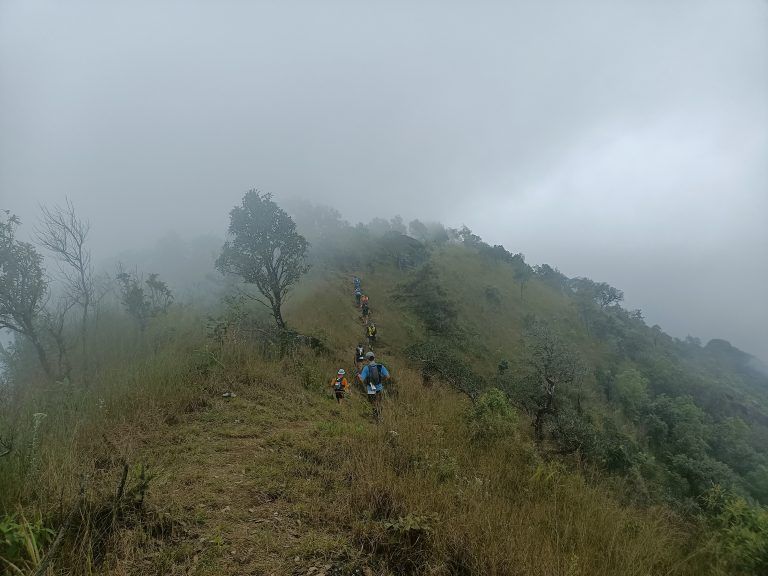
Some of the stunning scenery Doug got to witness. Photograph – Doug Bartlett.
And so the race went on. I was managing my diarrhoea ok. Did I mention I had the runs? Since Thursday they’d started, caused by who-knows-what local food. My plan to deal with this was to get to the toilet ASAP at each aid station, and while eating at the aid station I knew I had about two hours of grace before the food percolated through and started the next round. Yes, having the runs is not good for an ultra, but I made sure I stayed hydrated and the worst that could happen was – well, I think you can guess.
So a word on the toilets: I must express my appreciation to the organisers for arranging toilets at every aid station. Sometimes these were at a local school, or in someone’s outhouse nearby. They would be either sit-on types or squat types. Squatting while in the middle of an ultra is actually quite difficult as the leg muscles don’t like it! But anyway aside from that there was no toilet paper but there was a hose. Because the villages and farms had fresh water piped down from the mountain they often had a little hose which you could use like a bidet. Then you put your pants back on with a wet bum. I couldn’t risk using my small supply of toilet paper because, well: I might need it for an emergency! There was a little miracle at one of the aid stations on the second day: an American was sitting there waiting his turn for the toilet, holding a roll of toilet paper! “Is that for sale?” I asked. He said he always packed a roll in his drop bags from previous experience, and would leave it for anyone else to use. Ahh, the relief of some soft paper!
Sometime during the day the 100km ‘Cliffs’ race had merged with our course. So now, reaching the Pa Kluai Village Aid 9 (102.5km), the aid station was chocka-block full of people. And yet everything worked smoothly: the drop bag system was quick and efficient (Summit 160 runners only had two drop bags at 50km and 102km), people moved around each other to get to food and drink, and there always seemed to be a spare seat and table space.
By mid afternoon I had reached Pong Noi Village Aid 10, and left an hour and a quarter before cutoff. Still close, but the trail had now shown its colours: you climbed and climbed and climbed, breathe, breathe, breathe, then descend steeply step by step, quads burning. At the bottom you started climbing again, kilometres at a time. The trail wound in and around valleys, through rice, corn, and strawberry farms, up and over a number of ridges, past banana palms, coffee plants, massive elephant ear palms, and pine trees on the upper reaches. The trail often followed water pipes that fed the valleys below, offering some distraction.
Moving along I’d hear a strange noise up ahead: was that some kind of frog, or an animal growling, or a swarm of bees? Alarmed, I’d slow down, searching through the bushes for what could cause the strange noise, and then realising what it was: the water pipes. Here and there they had little cracks or holes and water squirted or sprayed, buzzed or growled (literally!). They were the only signs of wildlife in the dark jungle.
The trail crossed many creeks. Some were just water hopping fun while a couple involved balancing on logs or splashing through. At one crossing a Japanese man in front balanced precariously on a log halfway across a wide creek, then stepped to another to reach the far side. The Japanese lady behind him tried to copy but lost balance and stepped into the creek, as did I. After my first creek immersion the night before my feet had gotten a bit waterlogged, and had actually dried up during the day, so this was another ‘oh well’ moment. No more dry socks now.
Throughout this race there was always someone just ahead or behind. The courtesy was great, with people readily stepping aside as someone came through. I tended to pass people going steep uphill (fast walking) while they’d pass me on the downhill. Of the 540 runners, 70% were Thai, with Malaysians, Singaporeans, Japanese and Chinese being 3-4% each. We could see from the nation flags we each had clipped to our packs. You got to know the runners around you – the guy with the metal thing on his pack that went clang, clang, clang, – the guy who always breathed loudly and heavily going uphill, – the Thai couple (maybe) who had neon coloured hiking poles, hers yellow and his pink, – and the really crazy two Japanese ladies who didn’t stop chatting and smiling, for the whole race.
As the second night fell, drowsiness came on, and I desperately needed to have a nap. A strange glowing thing to my left turned out to be a runner having a nap with a bunch of coloured LED lights on. I found my own place with a little breeze to avoid the mosquitoes, and tried to rest. But every time a runner came through they’d (of course) turn their lights to me. So no nap. I went on a bit further then found a nicer spot where I could face away from the runners. I only could afford 10-15 minutes as I was still too close to cutoff, so: sleep. Nine minutes later I was awake, and moved on. Was it enough? I’d just have to wait and find out. This was my magic rule for running ultras: I had to be patient and let things happen. Soon after that we ascended the steepest section yet, an exposed rocky ridge with ropes attached to help climb up. It was a massive risk for fatigued, tired climbers, and no-one was running this section!

Photograph – Doug Bartlett.
Through this second night I was eating less and less and feeling a little nauseous. My runs had sorted themselves out, and all my leg and foot pain had gone, so two less things to worry about. Normally when I start feeling nauseous like this, I eat a little bit of ginger and wait for my stomach to tell me it’s hungry. But this time it didn’t. Every now and then I would think: this is it, time to vomit, but no, not quite there. And still not hungry. All I could do was keep moving, chewing a little something now and then. The salty corn chips from the aid station were ok, and those magic green oranges. I kept drinking regularly, having chewable salt tablets as well, but still not hungry. And so for the remainder of the race, all of the last night and morning, I was running on empty without a lack of energy. I was ion some kind of weird fat burning mode.
And then another dawn rose, spreading beautiful colours through the sky as I came into the last aid station at Mae Klang Luang Village, only 5.1km from the finish, a Parkrun to go! It was 6:03am and I was now two and a half hours ahead of cutoff, a safe margin. The trail gradient became easier and it was time to run: so, “for no particular reason, I decided to go for a run”. Who were all these people walking the flat sections when the finish was so close?
Ecstatic, almost in tears, I came into the finishing chute with crowds of people around cheering us on. And my finishing result: 45 hours, 28 minutes, 214th out of 540 (of which 227 DNFs), and best of all, eight stones towards the UTMB lottery!
A special thank you to the many, many volunteers and crew who put together this event, and the many runners who shared in the pain, suffering and elation. The course was amazingly well marked, all the aid stations well serviced, and despite the language differences everyone was courteous and helpful, and it was a pleasure to be out on the trails in Thailand. If you’re reading this, then give it a go. You know you want to!
MORE PHOTOS:

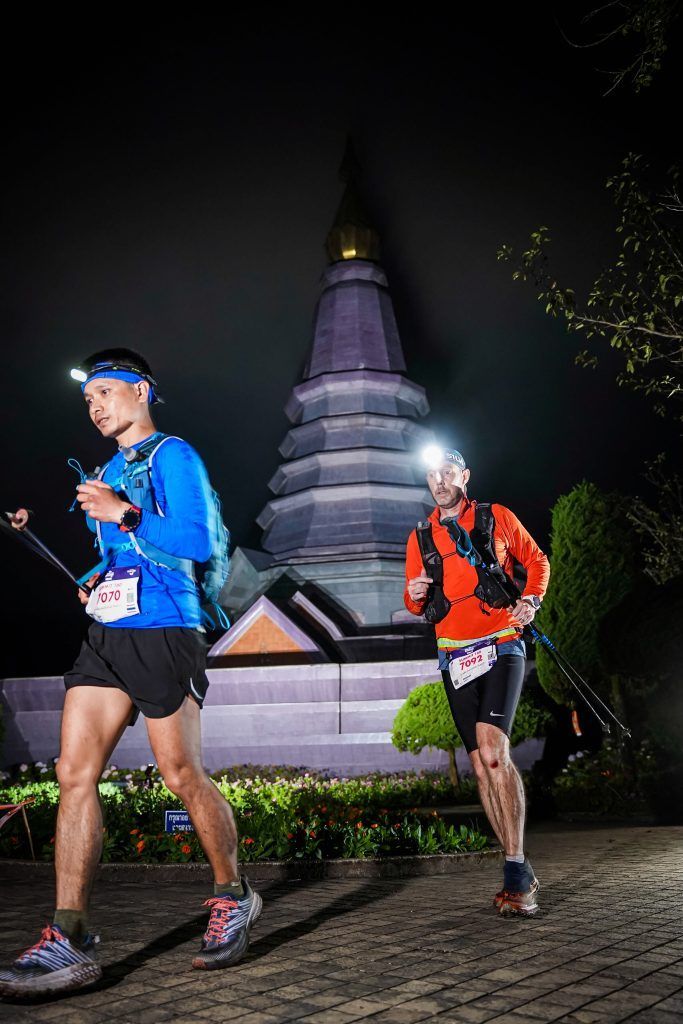

Feature Image: Doug Bartlett crossing the finish line of the Thailand UTMB Summit 160. Photograph – Running Connect/Supplied.

